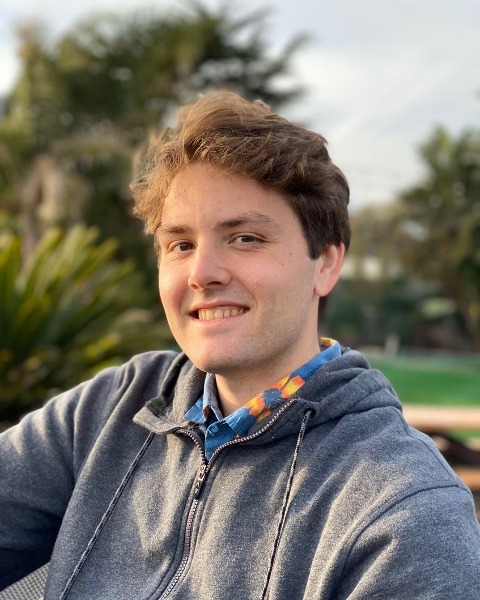Research (R)
PP1312 - Effect of Temporal Acuity by Speaking Rate Among Younger and Older Adults
- MH
Miwako Hisagi, AuD, PhD (she/her/hers)
Assistant Professor
California State University, Los Angeles
California State University, Los Angeles
Los Angeles, CaliforniaFinancial Disclosures: I do not have any relevant financial relationships with anything to disclose.
Non-Financial Disclosures: I do not have any relevant non-financial relationships with anything to disclose. - AP
Annett Presmic Acosta, BS (she/her/hers)
AuD student
California State University Los Angeles
Downey, CaliforniaFinancial Disclosures: I do not have any relevant financial relationships with anything to disclose.
Non-Financial Disclosures: I do not have any relevant non-financial relationships with anything to disclose. 
Mike Zandona, BA
Student of Audiology
University of South Florida
Tampa, FloridaFinancial Disclosures: I do not have any relevant financial relationships with anything to disclose.
Non-Financial Disclosures: I do not have any relevant non-financial relationships with anything to disclose.- JK
Justin Kent, BA (he/him/his)
Occidental College, California
Financial Disclosures: I do not have any relevant financial relationships with anything to disclose.
Non-Financial Disclosures: I do not have any relevant non-financial relationships with anything to disclose. 
Eve Higby, PhD (she/her/hers)
Assistant Professor
California State University, East Bay
Hayward, CaliforniaFinancial Disclosures: I do not have any relevant financial relationships with anything to disclose.
Non-Financial Disclosures: I do not have any relevant non-financial relationships with anything to disclose.- KT
Keiichi Tajima, PhD (he/him/his)
Professor
Hosei University
Hosei University
Tokyo, JapanFinancial Disclosures: I do not have any relevant financial relationships with anything to disclose.
Non-Financial Disclosures: I do not have any relevant non-financial relationships with anything to disclose.
Lead Presenter(s)
Presenter(s)
Summary:
Understanding the factors that influence auditory processing in older adults is essential for developing strategies to assess and prevent potential language comprehension declines in aging. Non-native listeners may use different strategies than native listeners for processing auditory information, necessitating different types of assessments and interventions.
Previous research on speech perception in bilinguals indicates Spanish-English (S-E) bilinguals use perceptual-acoustic properties differently from American English-speaking monolinguals (AE) during English speech perception (Hisagi et al., 2021). The lower discrimination performance of late S-E bilinguals is likely related to an inability to use durational cues. Hisagi et al. (2022) explored the perception of three types (vowel, consonant, syllable) of Japanese temporally-cued contrasts and found that AE performed better than S-E bilinguals. Japanese and English listeners have an audio-processing advantage over Spanish listeners because both languages use temporal cues to differentiate word meanings while Spanish does not.
Auditory processing strategies are also affected by speech rate. The categorical perceptual boundary between short and long phonemes depends on speaking rate (Kato & Tajima, 2004). Wilson et al. (2005) explored the long/short perceptual boundary for Japanese contrasts at three different speaking rates (fast, normal, and slow) in blocked and mixed conditions using non-word vowel and consonant stimuli. English speakers performed more poorly at faster rates and in the mixed condition compared to a Japanese control group. Both groups showed a counter-adaptation trend, but the trend was strongest for English speakers. Counter-adaptation occurs if the perceptual boundary is based on the absolute duration of the phonemic segment while adaptation occurs if the perceptual boundary is based on the duration of the phonemic segment relative to the rest of the word.
The current study examined auditory temporal sensitivity among non-native listeners and explored whether listeners engage an adaptation or a counter-adaptation strategy for perceptual contrasts with increased or decreased speaking rate. This online study used a single-stimulus two-alternative forced choice identification task that measured duration identification using the identical word stimuli from Wilson et al. (2005). AE and S-E bilinguals listened to temporally-contrasting Japanese words.
Preliminary results from 56 younger adult listeners, aged 19-41 years (22 AE, 26 S-E, 8 Japanese controls) and 16 older adult listeners, aged 50-75 years (6 AE, 2 S-E, 9 Japanese controls) showed that listeners tend to adapt their perceptual boundaries based on speaking rate, but this strategy differs for bilinguals and monolinguals in the younger group and between younger and older groups, especially for consonants and mixed conditions. For vowels, younger AE and some S-E bilinguals showed evidence for counter-adaptation; however, all groups showed almost no adaptation for consonant stimuli. Recruitment of older adults is ongoing.
These findings can contribute to improving clinical care of older bilinguals with SNHL by identifying perceptual strategies in the non-native language and interactions with speaking rate. A possible future direction will be to examine how degraded representations of temporal information due to SNHL in older adult bilinguals contributes to impaired speech-perception abilities by evaluating the nature of degradation in the neural encoding of acoustic features.
Learning Objectives:
- Upon completion, participants will be able to describe the contributions of aging and speaking rate to the perceptual temporal acuity of phonemic length contrasts for vowels and consonants.
